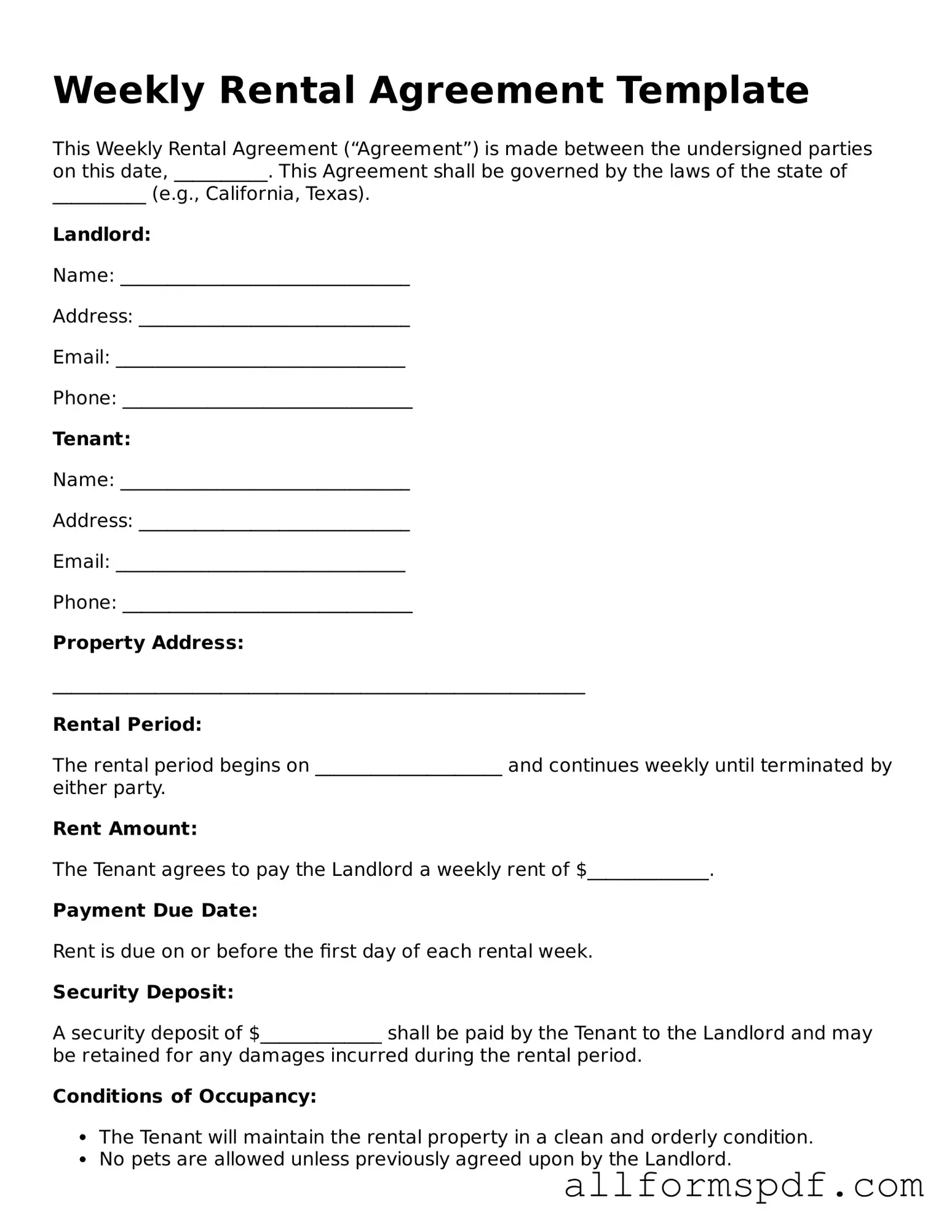Filling out the Weekly Rental Agreement form can seem straightforward, but many people make common mistakes that can lead to delays or complications. One frequent error is not providing complete personal information. Ensure that all fields, including your full name, address, and contact number, are filled out accurately. Missing details can hinder communication and may even void the agreement.
Another mistake is failing to read the terms and conditions carefully. Skimming through the document can result in misunderstandings about rental policies, fees, or responsibilities. Take the time to understand what you are agreeing to. Clarity is key to a smooth rental experience.
People often overlook the importance of specifying rental dates. If you do not clearly indicate the start and end dates, it can create confusion for both parties. Always double-check that the dates are correct before submitting the form.
In addition, many individuals forget to sign the agreement. A signature is crucial as it signifies your acceptance of the terms. Without it, the document may not be legally binding. Don’t skip this step, as it can lead to unnecessary complications.
Another common error is neglecting to include payment information. Whether it’s a deposit or the first week’s rent, ensure that you provide the necessary payment details. Missing this information can delay the process and affect your ability to secure the rental.
Some people also fail to communicate special requests or conditions. If you have specific needs, such as pet accommodations or accessibility requirements, make sure to note them on the form. This helps ensure that your needs are met and avoids potential conflicts later.
Additionally, individuals sometimes submit the form without reviewing it for errors. Typos or incorrect information can lead to issues down the line. Before submitting, take a moment to proofread the entire document. A quick review can save time and hassle.
Lastly, be cautious about submitting the form without a copy for your records. Keeping a copy is essential for reference in case any disputes arise. It also serves as a reminder of the terms you agreed to. Always ensure you have a record of what you submitted.
